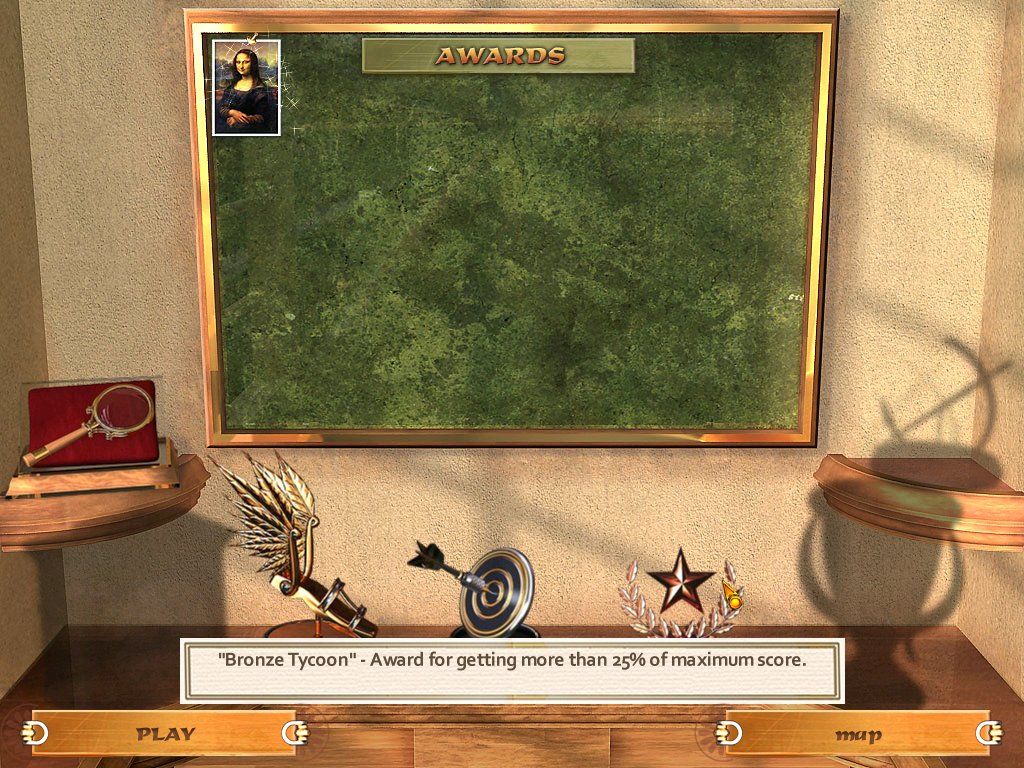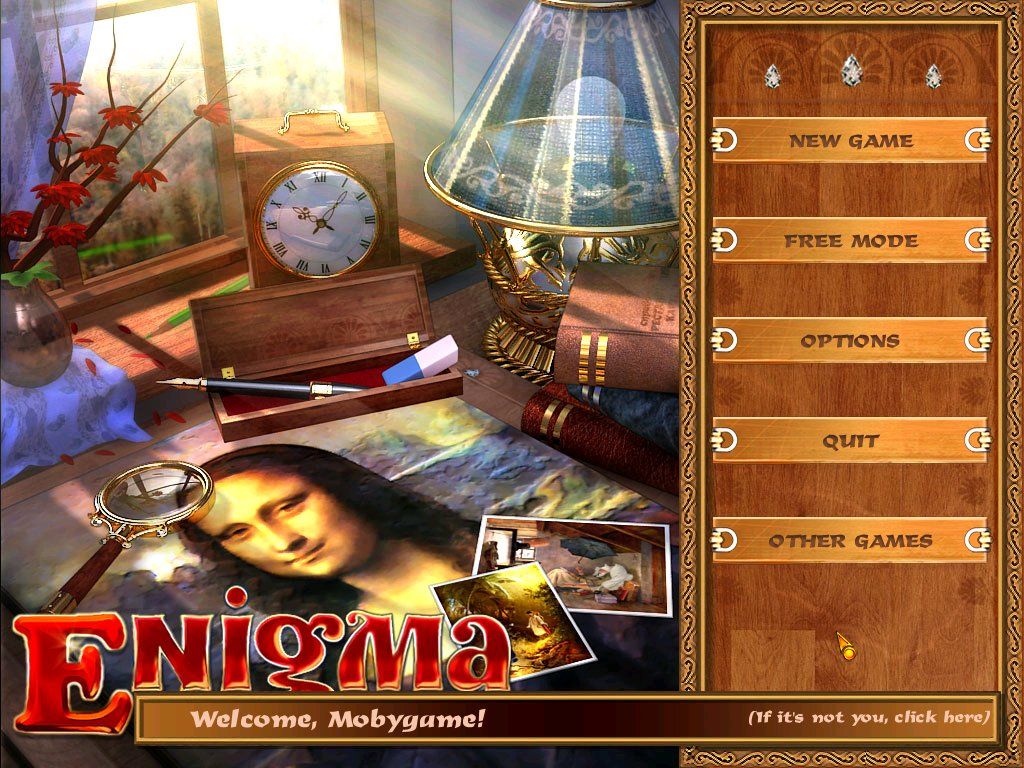Retro Replay Review
Gameplay
Enigma takes the familiar hidden object formula and elevates it by embedding misplaced items directly into masterpieces of fine art. Rather than hunting through cluttered rooms or random environments, players must closely inspect renowned paintings by artists such as Vermeer, Rembrandt, and Goya to spot everyday objects that have been cleverly overlaid. This twist on the genre encourages a deeper appreciation of the original artwork while challenging your observational skills in new ways.
The interface is intuitive: a notebook on the right-hand side displays a dynamic list of items to locate, while a thumbnail of the pristine painting sits unobtrusively at the bottom of the screen for reference. As you click on each discovered object, the notebook updates, giving you a clear sense of progression through the 50 unique stages. The pace is adjustable through hint tokens, allowing both casual players and hidden-object veterans to tailor the challenge to their comfort level.
Between each art stage, Enigma introduces a mini-game that tasks you with reassembling the painting by placing found objects back into their rightful positions. This additional layer of interactivity breaks up the object-finding routine and adds a satisfying jigsaw-puzzle element. Successfully completing these reassembly rounds not only reinforces your memory of the objects you encountered but also unlocks bonus content and historical context about the featured artwork.
Graphics
As a game built around exquisite paintings, Enigma naturally showcases high-resolution reproductions of 50 masterpieces drawn from different eras and styles. Each canvas retains its vibrant colors and brushstroke details, ensuring that art lovers will be treated to a faithful digital representation. The overlaid items blend seamlessly with the original work, balancing visibility for gameplay without jarring disruption to the artistic integrity.
The UI design is clean and unobtrusive. The notebook and thumbnail windows feature minimalist frames that complement the period aesthetics of each painting without covering important visual areas. Animations are smooth: when you find an object, it subtly glows before fading out of the canvas, and the transition to the mini-puzzle segment is accompanied by a tasteful fade and gentle background music shift.
While the core visuals rely on classic art, Enigma spices things up with occasional ambient effects—such as dust motes drifting across an Old Master’s workshop scene or candlelight flickering in a Baroque interior—to immerse players further. These environmental touches, though subtle, enhance the atmosphere and make each level feel like stepping into a living gallery rather than a static image.
Story
Enigma’s narrative framework is light but thematically engaging. You play as a novice curator at a mysterious academy dedicated to preserving lost art. Rumors swirl that certain paintings have been altered or damaged, and it’s up to you to restore them to their original glory. While not heavily plot-driven, the premise provides a satisfying justification for each hidden object search and restoration mini-game.
Between levels, short text-based journal entries reveal snippets of the academy’s lore and the backstories of some featured paintings. These narrative interludes are brief but enriching, offering historical tidbits about the artists, the era, and the provenance of each piece. This educational component lends depth to the gameplay, elevating it beyond mere item hunts into a cultural journey through art history.
Although there isn’t a traditional character-driven storyline, the sense of progression—unlocking new wings of the academy and discovering more elusive works—gives players a steady incentive to continue. The game’s atmosphere evokes the hush of a museum after hours, where every click feels like uncovering a hidden secret tucked away in a frame.
Overall Experience
Enigma offers a refreshing take on the hidden object genre, blending art appreciation with puzzle-solving in a way that feels both educational and entertaining. The combination of 50 high-quality paintings, a straightforward UI, and the rhythmic interplay between item-finding and mini-games provides hours of engaging play. Whether you’re a casual gamer looking for a relaxing pastime or an art enthusiast eager to interact with classic works, Enigma strikes a pleasant balance.
The learning curve is gentle, thanks to adjustable hint options and the clear notebook system, yet the game still poses a worthy challenge as objects become more intricately camouflaged within brushstrokes. The reassembly puzzles add variety and break the routine, making each level feel distinct. Moreover, the little historical notes peppered throughout enrich the overall experience, making every restoration feel meaningful.
In summary, Enigma is an inviting journey through art’s hidden corners, perfect for anyone who loves puzzles and painting. It’s accessible enough for newcomers, yet detailed enough to satisfy seasoned hidden-object fans. If you’ve ever wanted to step inside a gallery and play detective among the masterpieces, Enigma delivers an imaginative and polished adventure that’s well worth exploring.
 Retro Replay Retro Replay gaming reviews, news, emulation, geek stuff and more!
Retro Replay Retro Replay gaming reviews, news, emulation, geek stuff and more!









Reviews
There are no reviews yet.